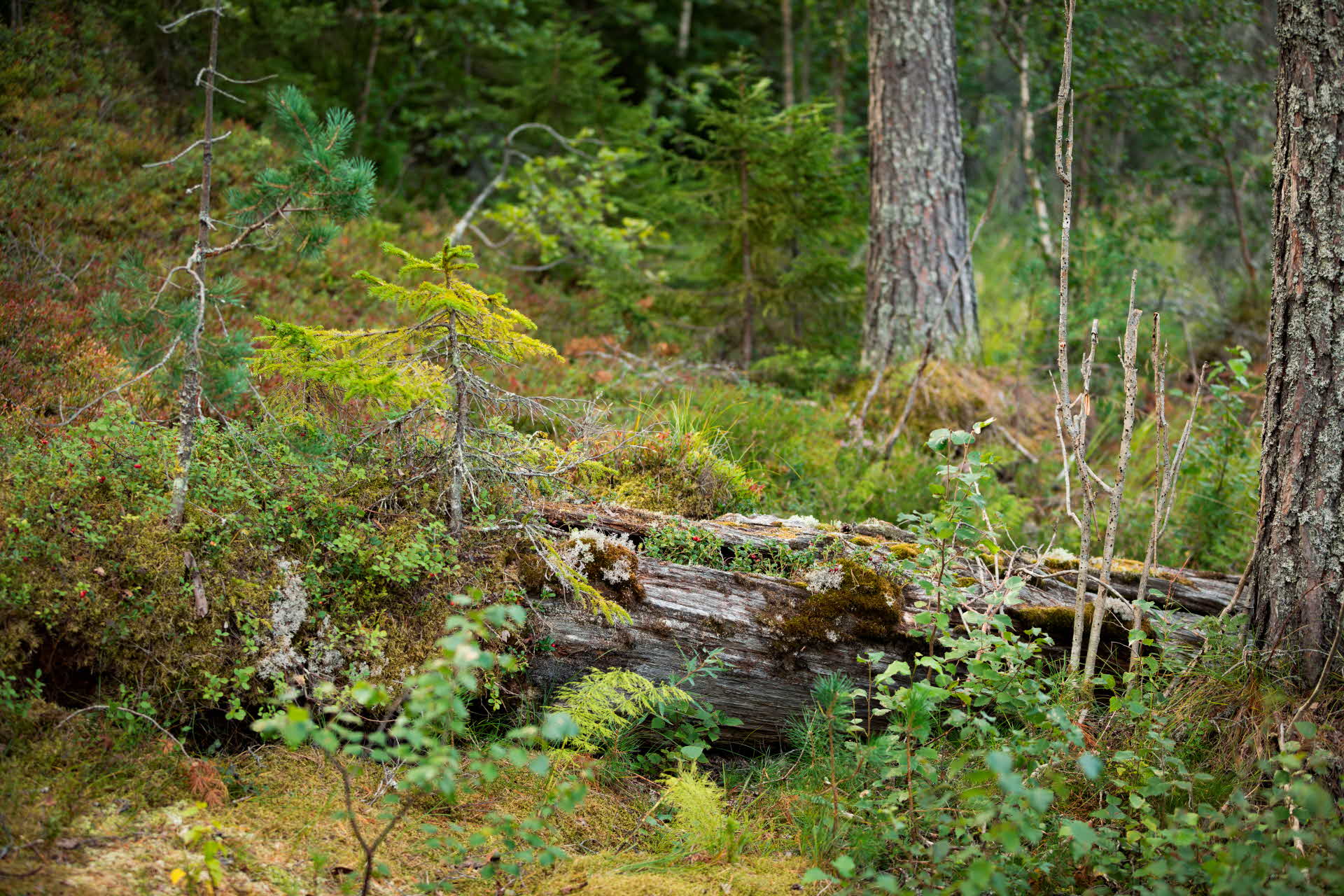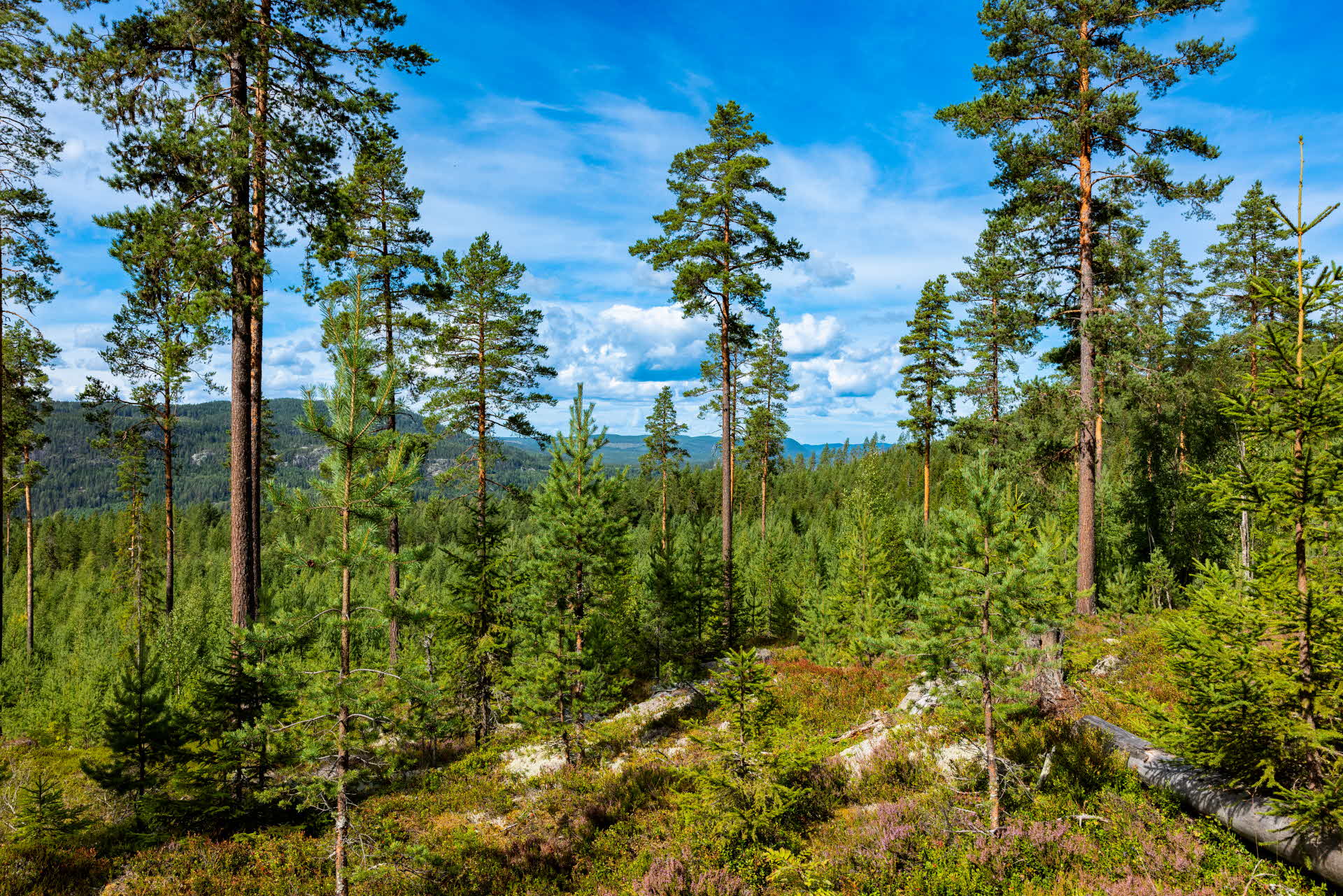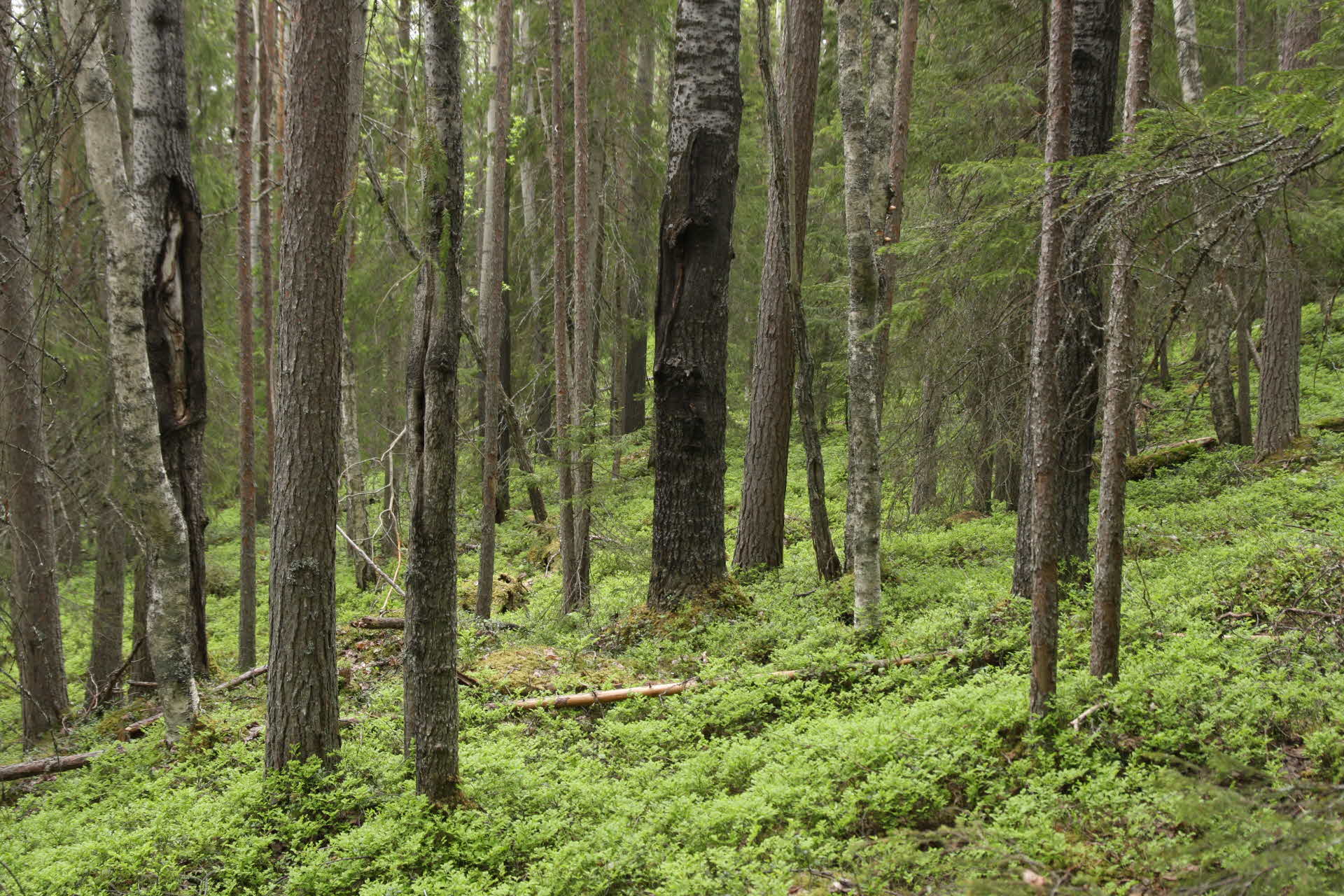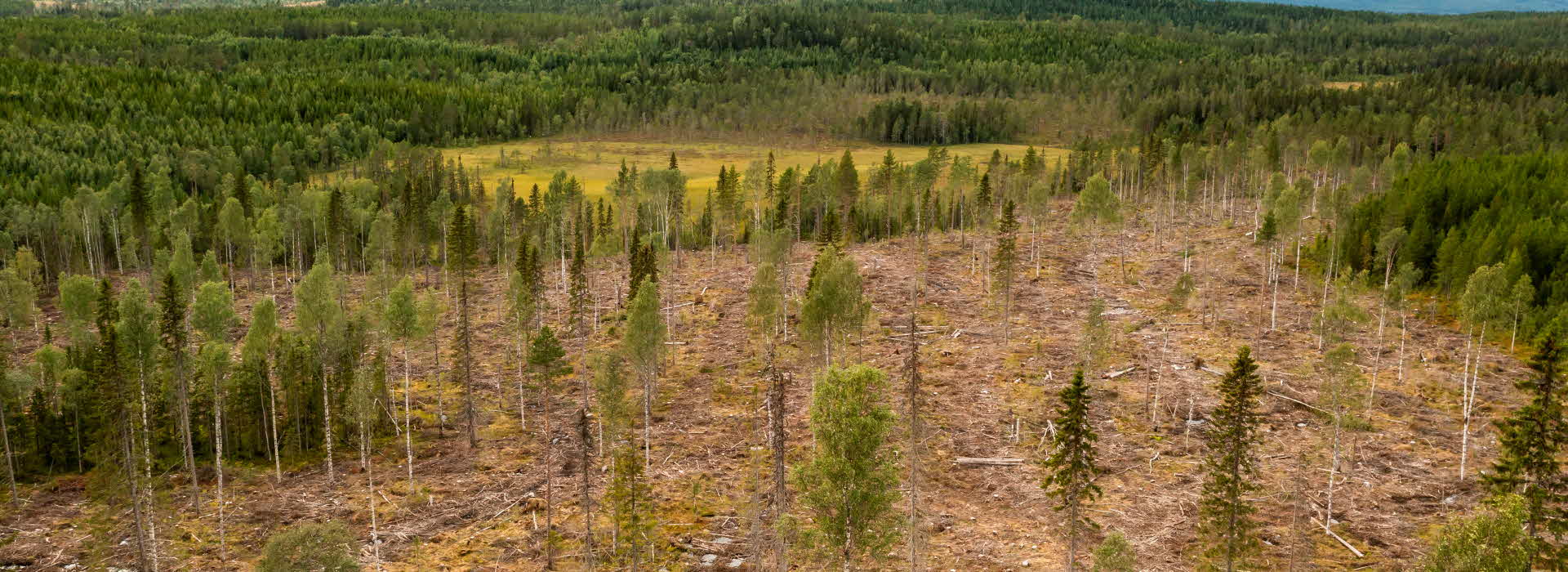
- FOREST
- SCA's FORESTS
- RESPONSIBLE FORESTRY
- ENVIRONMENTAL CONSIDERATION
- CONSERVATION VALUE PROTECTION – THE PLANNING PROCESS
Conservation value protection – how the planning process works
Every harvest we carry out oin our forest is preceded by a long and thorough process, where we take a wide range of aspects into account. Our most important goal is to ensure that all species living in our forests can continue to do so in the future.
Areas with high conservation value are set aside for nature conservation, while we conduct extensive planning for nature consideration in the forests that we are planning to harvest and renew. We have a whole palette of measures to choose from when adapting our management to the unique conditions of each area.
In order to consider rare species, we don’t look primarily for specific plants, insects, fungi or birds in our forests, but for the so-called structures that many different species are dependent upon. These include dead wood, old trees and thick deciduous trees. These structures were far more common in the past when forests were subjected to frequent fires.
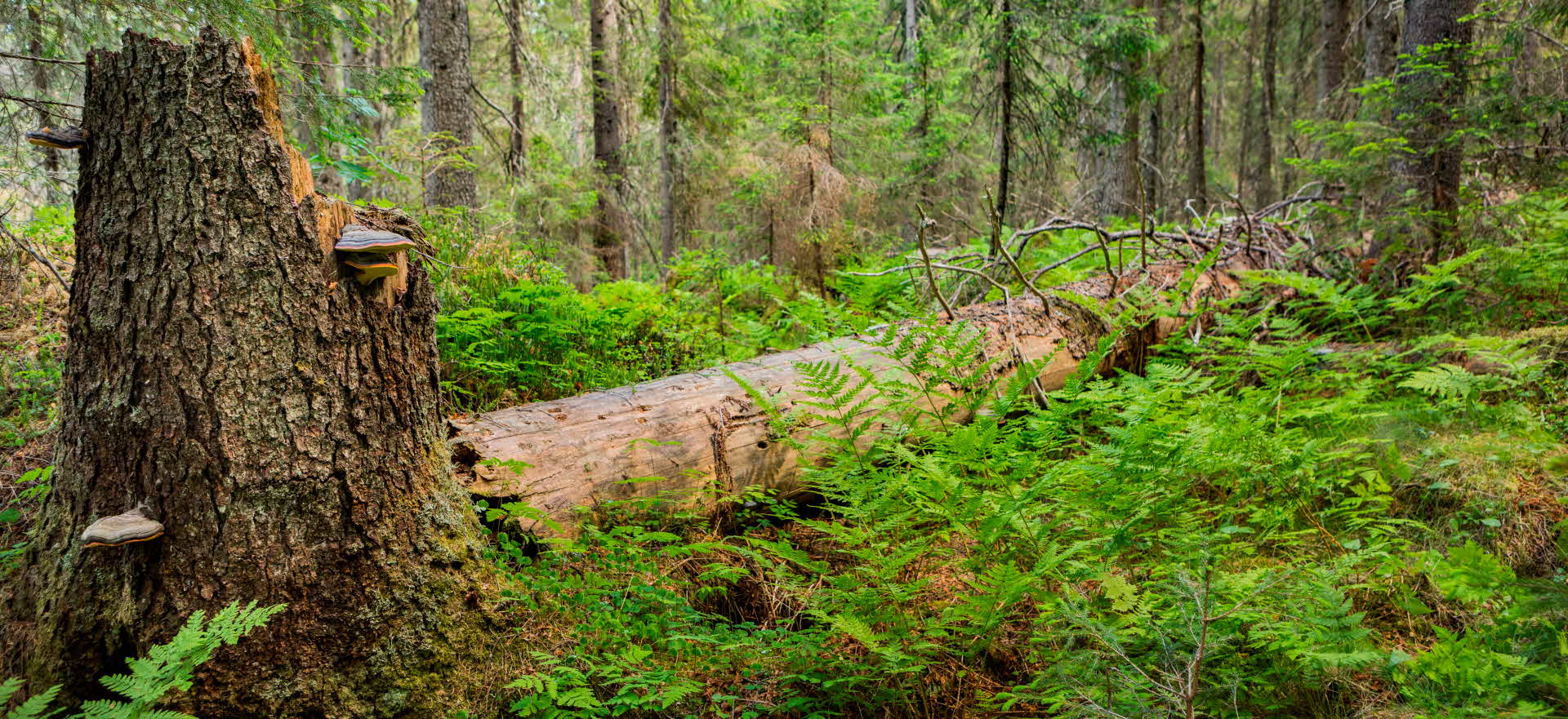
Dead wood is an important structure that many different species are dependent upon.
Many trade-offs
When assessing conservation values in our forests, we look at the local conditions while also assessing values in the long term and from a landscape perspective. We have conducted ecological landscape planning for our entire land holding and identified the forests with the highest conservation value. We set those forests aside voluntarily and either let them develop freely, or manage them with the aim of promoting their conservation value.
“When looking at our forest holding from a landscape perspective, we also decide what areas we will use for timber production. The decision to harvest an area is preceded by a long list of trade-offs,” says Ola Kårén, Chief Forester at SCA.
Checklist for assessment
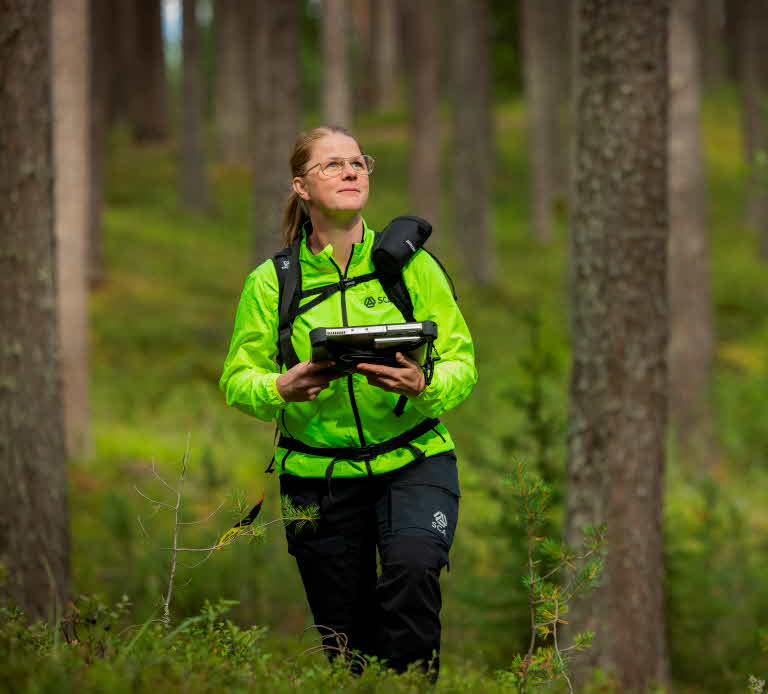
As the time for harvesting approaches, extensive planning is always carried out for the specific harvesting site. SCA’s highly proficient operational planners go through the forest systematically and one of their most important tasks is to determine the nature considerations that must be made. But they are also responsible for much more, such as planning how to regenerate the forest after harvesting.
When it comes to conservation values, the operational planners fill in a checklist based on a variety of factors, which provides a solid basis for their assessments. The checklist is mainly focused on structures, such as dead wood and the proportion of old trees. The operational planners also identify any habitats that are important for many species, such as swamp forests, or areas with lots of hanging lichen or deciduous trees.
The operational planners mark valuable old windthrows (lying dead wood) and trees with nest holes or fire scars, for example, so that they won’t be damaged by the harvesting operation. In areas where there is information about the existence of red-listed or protected species, the planners check whether any special considerations are required as a result.
Another aspect that is taken into account in planning is a forest’s history, or why the forest looks the way it does today. What management method was used in the past, whether the site has burnt before, and so forth.
A palette of measures
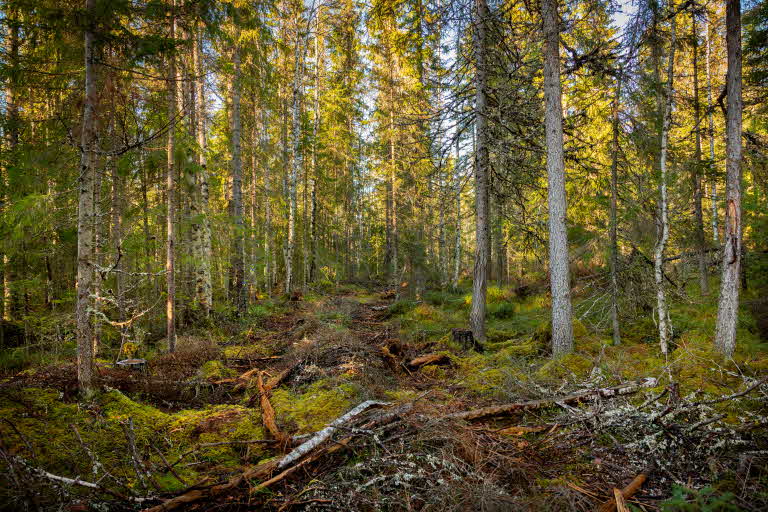
In general, we have already found the areas with the highest conservation value in our ecological landscape planning or in conjunction with targeted conservation value inventories, but if we find more of these areas in the operational planning, we exempt them from harvesting and set them aside voluntarily.
“If the trade-offs are difficult, the planners can consult one of SCA’s nature conservation experts for support. It’s not always black and white when it comes to conservation value. Making assessments can be complex at times,” says Ola.
In addition to the alternatives of harvesting a forest area or setting it aside voluntarily, there is also a whole palette of other measures. In some forests with high conservation value, we can combine use with measures that preserve or develop the conservation value. We call this forests with combined targets and we can use continuous cover forestry (CCF) methods here to preserve the feeling of a forest. Selection system is one such example.
In forests with lower conservation value, we apply strengthened or adapted consideration. This means that the harvesting is adapted to the needs of specific species. This may involve shelterwood cutting of deciduous trees to create light and open deciduous forests that attract many types of birds.
Extensive basic retention
We apply basic retention in other forest areas, as well as extensive nature considerations. For example, we retain conservation patches, buffer zones around watercourses and mires, old trees and dead wood. This promotes a wide range of species – from birds and insects to fungi and lichens.
When the operational planners go through the site prior to harvesting, they mark the large areas to be retained on a digital map. They create an operational plan for the harvesting team, to let them know how and where to harvest.
The harvesting team also has a major responsibility for the design of conservation considerations. While they are harvesting, they make decisions about detailed conservation measures, meaning areas that are smaller than the type of considerations that the operational planners have marked on the operational plan’s map. The forest operators decide, for example, which preservation trees and tree groups are to be retained. On sites to be harvested with basic retention, we leave approximately 15% of the trees as part of our conservation practices.
Prioritize from a landscape perspective
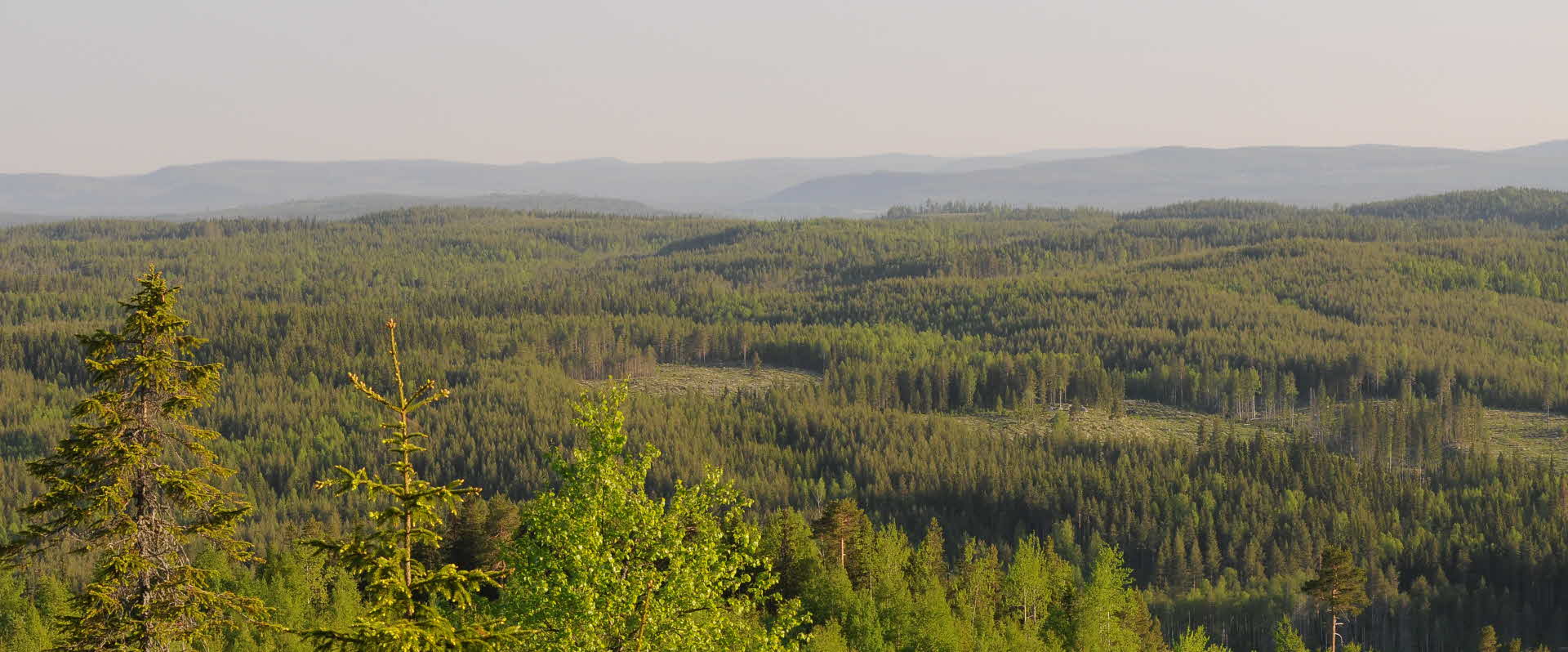
Our harvesting is sometimes subject to criticism. This is mostly because the critics don’t think we should harvest some sites.
“Unfortunately, we’ve made mistakes in the past and not followed our procedures, but we are working actively to minimize the risk of that happening again. But usually it’s because we and the critics have different views about what sites should be retained,” says Ola.
“Our aim is to always account for the rarest and most endangered species, that goes without saying. But for other, more common species, we can’t take specific measures for every single species in every single harvesting operation. Basic retention will be important for these species instead, both now and in the future.”
We therefore make trade-offs from both a landscape perspective and on site in the individual stands and prioritize the areas or measures that create the most value for various species. We strive to maximize the value of the areas that we retain for free development, and the areas where we work actively to promote conservation values or use with combined targets.
Creating sustainable products
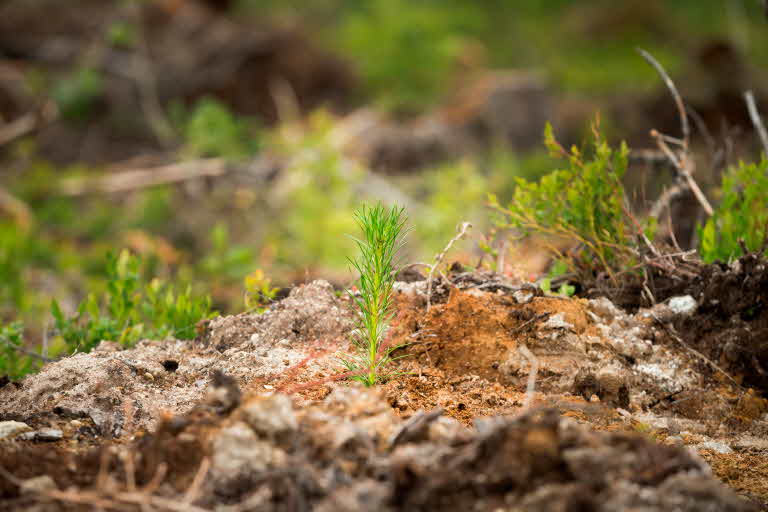
The foundation of SCA’s mission is to maximize the value of both our forest and of the products we create from it.
“We take a lot of responsibility for biodiversity and one of our most important sustainability targets is to ensure that all species found in our forests can continue to live there in the future. At the same time, we don’t want to limit the extraction of timber too much, since our mission is to produce sustainable, climate-smart products from wood. And we need good access to timber for that,” says Ola.
In addition to the fact that SCA’s products are important in the transition to a sustainable society, SCA’s operations are creating value in many others ways. SCA also creates thousands of jobs and contributes to viable communities in Northern Sweden.
SCA manages its forests so the volume of standing timber is constantly growing. For every tree harvested, we plant at least two new ones. Other important measures in forest management are soil scarification before planting and thinning and clearing. SCA also fertilizes some areas and plants fast-growing contorta pine on a small part of its land holding. We have never had more forest than we have now.

Different species have different needs
The best way to protect and develop conservation values depends entirely on the conservation values involved. Many species that thrive in broad-leaved and pine forest want a lot of light and warmth. They usually benefit from the fact that we extract a lot of timber from the forest, especially spruce. If we don’t take any measures in these types of environments, spruce will eventually take over and the conservation values that can be found there will be lost.
Species in spruce forest generally want shade and continuity forest. In simple terms, they want peace and quiet, with no major disruptions or changes in the forest. Spruce forest with high conservation value often therefore benefits from free development, but selection cutting or selection system, where a minor share of trees is extracted, can also be highly effective.
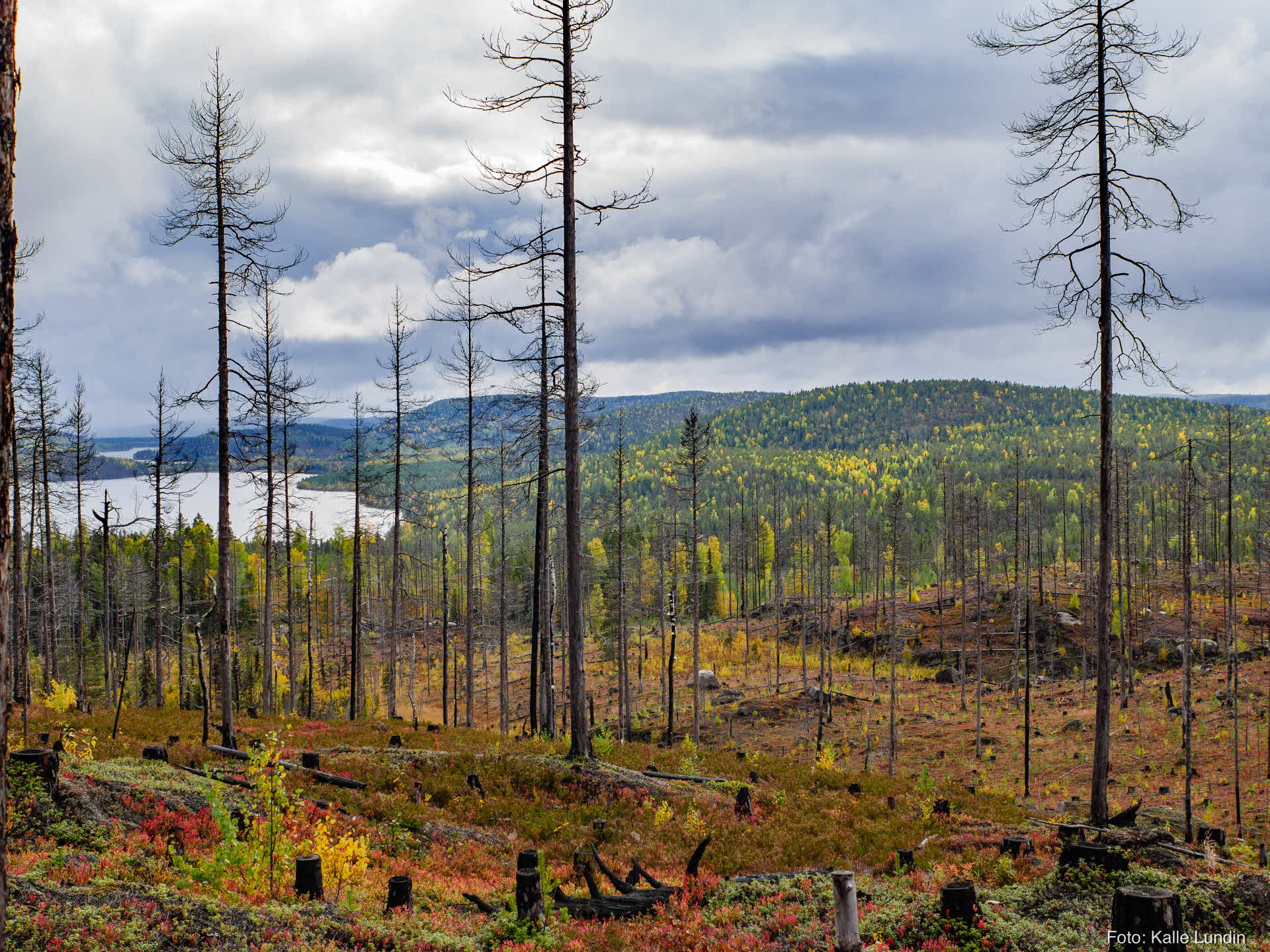
Free development – or not
In the forest debate, we often hear the view that high conservation value forest should always be left untouched for free development, since forests were allowed to develop freely in the past, enabling them to create their own ecological systems and value.
“But there is one major difference. In the past, forests often burned, and that characterized the entire forest landscape and all of the species that lived there. We put those fires out today and that creates totally different conditions. If we let forests develop freely now, without regular forest fires, spruce would take over almost everything. That would create a lot of dark, dense forests,” says Ola.
To promote a wide variety of species, we need areas that develop freely as well as areas where we work with targeted initiatives and restorations, such as prescribed burns.
Environmental considerations – in all forest operations
Environmental considerations are included in all of our forest operations.
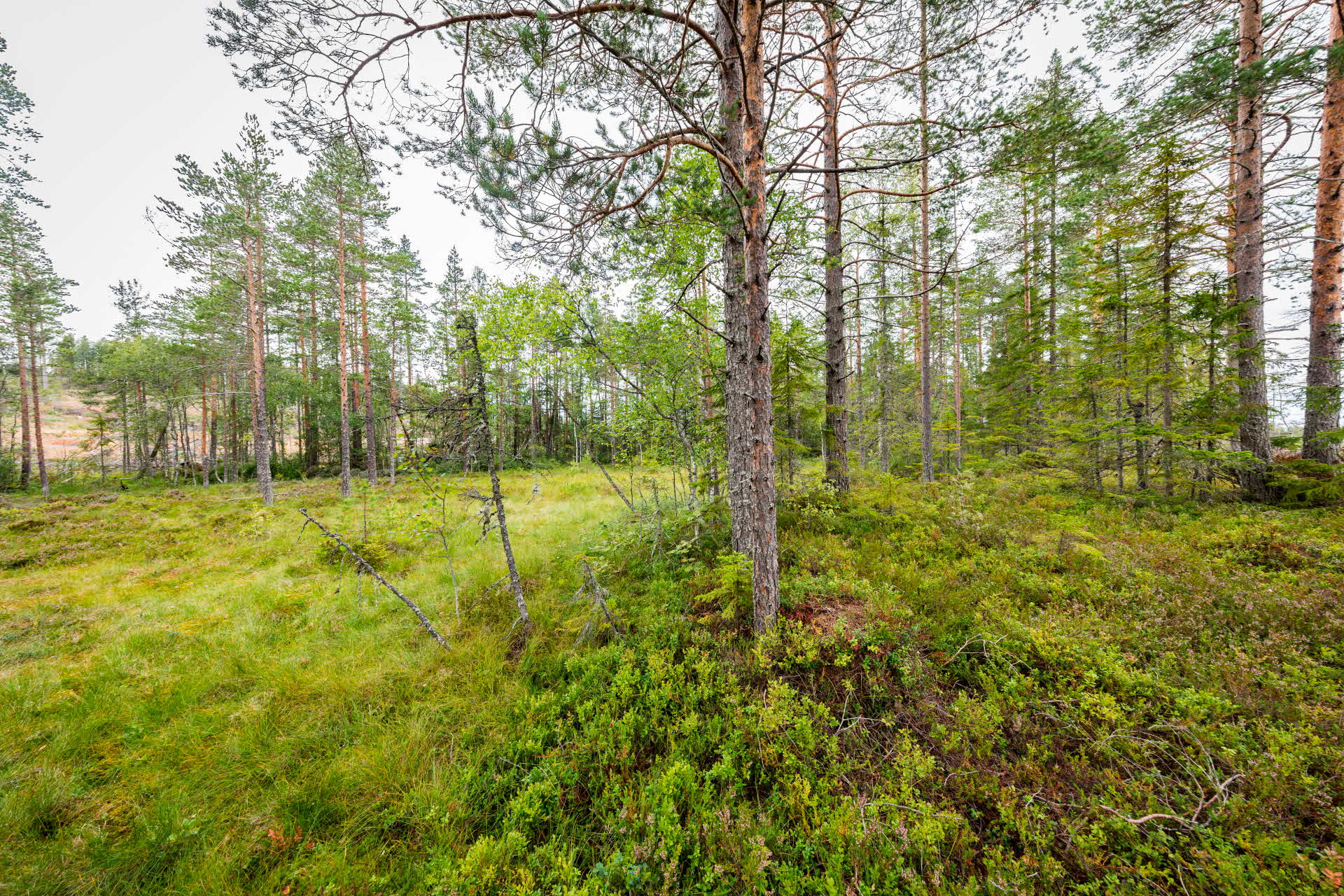
Nature considerations during harvesting for private forest owners
Even when harvesting for private forest owners, we make a thorough assessment of the conservation value prior to the harvest. Just like on our own land, we look for important structures and habitats and assess whether special consideration is needed for red-listed or protected species.
Forest owners who engage SCA for a regeneration felling can then choose the level of consideration they want to be taken. The Swedish Forestry Act’s level meets all legal requirements, while SCA’s level goes one step further. According to the SCA level, for example, we retain more living trees and nearly all dead wood. We also create high stumps to contribute more dead wood, since this is the biggest scarcity in modern forests. We urge everyone to choose SCA level in order to promote biodiversity.
